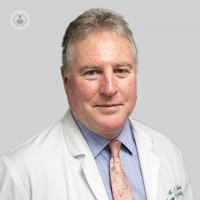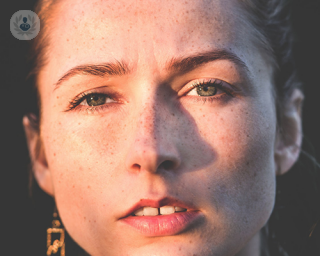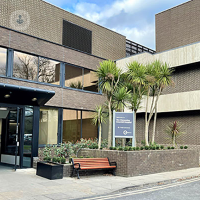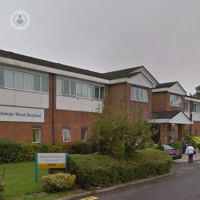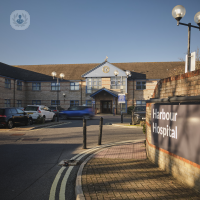Nasal deformity
Mr Joe Marais - Otolaryngology / ENT
Created on: 11-13-2012
Updated on: 04-06-2023
Edited by: Conor Lynch
What are nasal deformities?
Nasal deformities are anomalies in the shape and/or function of the nose. They are relatively common and many are simply aesthetic issues that cause no symptoms, although many patients are unhappy with their appearance because of the shape of their nose.
However, in some cases, nasal deformities can cause difficulty breathing, and treatment may be needed to improve functionality.
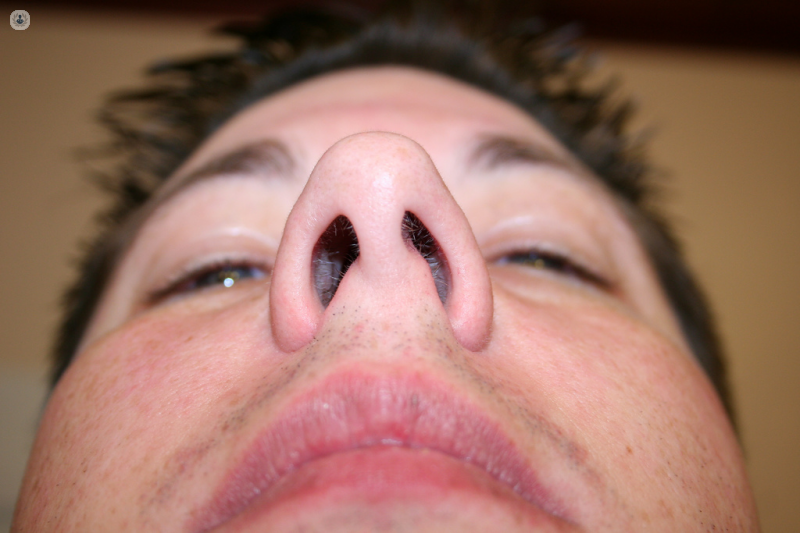
Some types of nasal deformities are:
- Deviated septum – the cartilage that divides the nostrils (septum) is bent to one side.
- Enlarged adenoids – lymph glands at the back of the nose (adenoids) can become enlarged, blocking the airway and causing sleep apnoea.
- Swollen turbinates – the turbinates on the side of each nostril clean and humidify air being breathed in. When swollen, they hamper breathing.
- Saddle nose – there is a depression in part of the nasal bridge. It is also known as 'boxer’s nose' and can be caused by a number of things, including trauma, certain diseases, and cocaine abuse.
- Nasal/dorsal hump – a hump in the nose is relatively common and is usually formed by excess bone or cartilage, depending where on the nose it occurs. Often running in families, it can also be causes by trauma.
There are other types of congenital nasal deformities, some of which, such as a cleft palate, affect more than just the nose.
Prognosis of nasal deformities
Although a nasal deformity can cause breathing problems, it is not a serious malformation that will impair your daily life. However, if breathing is difficult on a continuous basis, this can result in sleep apnoea and poor-quality sleep. Both breathing problems and aesthetics often worsen with age.
Symptoms of nasal deformities
Nasal deformities can produce symptoms such as:
- Blockage of one or both nostrils – this can make breathing difficult and is more noticeable when you have a cold or an allergy, which can inflame and narrow the nostrils.
- Bleeding – if the surface of the nose dries up, you may suffer more nosebleeds.
- Facial pain – sometimes a nasal deformity can cause facial pain.
- Loud breathing during sleep – this occurs if the tissue inside the nose is inflamed. It is common in infants and children with a deviated septum.
- Nasal cycle – the nose is usually blocked alternately on one side or the other, which is called the nasal cycle. This is normal, but if it happens very ofen it can mean an abnormal obstruction.
- Preference for sleeping on one side. Some people prefer to sleep on one side at night to improve nasal breathing, which may be due to a deviated nasal septum.
Medical tests for nasal deformities
The specialist will conduct an examination of the inside and outside of the nose. A fibroscope (a camera attached to a flexible optical fibre) is used for the internal examination. This device allows the specialist to see if there is a mechanical obstruction or if the nose collapses when you breathe in.
This examination allows the diagnosis of the aesthetic and functional problems. The specialist will then discuss with you the aspects that should be treated, the surgical techniques to be applied and what approach they need to take.
What causes nasal deformities?
Nasal deformities can be due to:
- Congenital anomalies – these occur during foetal development and present at birth. They may be due to genetic or environmental factors.
- Injury – in infants, this may have occurred during childbirth; in children and adults, there are many causes of trauma to the nose – injuries from contact sports are very common.
Treatments for nasal deformities
Various medications exist to manage the symptoms of nasal deformities, including analgesics, decongestants, antihistamines, and steroid sprays. The only real solution to the problem, however, is surgery. This could come in the form of a rhinoplasty, which reshapes the nose, or a septoplasty, which surgically straightens the cartilage between the nostrils.
The specialist will first plan and personalise the intervention, since no two noses are exactly the same. Surgery usually takes between one and a half to two hours to correct the functional and aesthetic defect. Most patients are discharged on the same day and the definitive results will be seen between three to four months.
Which specialist treats them?
Nasal deformities are usually treated by an otolaryngologist, who has in-depth knowledge of the nose, its anatomy and functionality, as well as of other pathologies associated with nose problems. Sometimes, rhinoplasty is performed by a specialist in plastic, aesthetic and reconstructive surgery, particularly by one who is highly specialised in nasal deformities.
Is it necessary to treat all nasal deformities?
Not all nasal deformities require treatment. The majority of patients wish to undergo surgical correction of their nasal deformity to improve their self-image and self-confidence.
What are some early warning signs of a nasal deformity?
Recurrent nasal congestion and infections are early warning signs that the patient may have a nasal deformity.
When should I see a doctor?
If you notice any recurrent nasal congestion or blockage or if you are constantly having to blow your nose due to cold and flu-like symptoms, you should seek to consult a specialist. Also, you should certainly consider visiting a doctor about suspected nasal deformities if the appearance of your nose is making you self-conscious.
